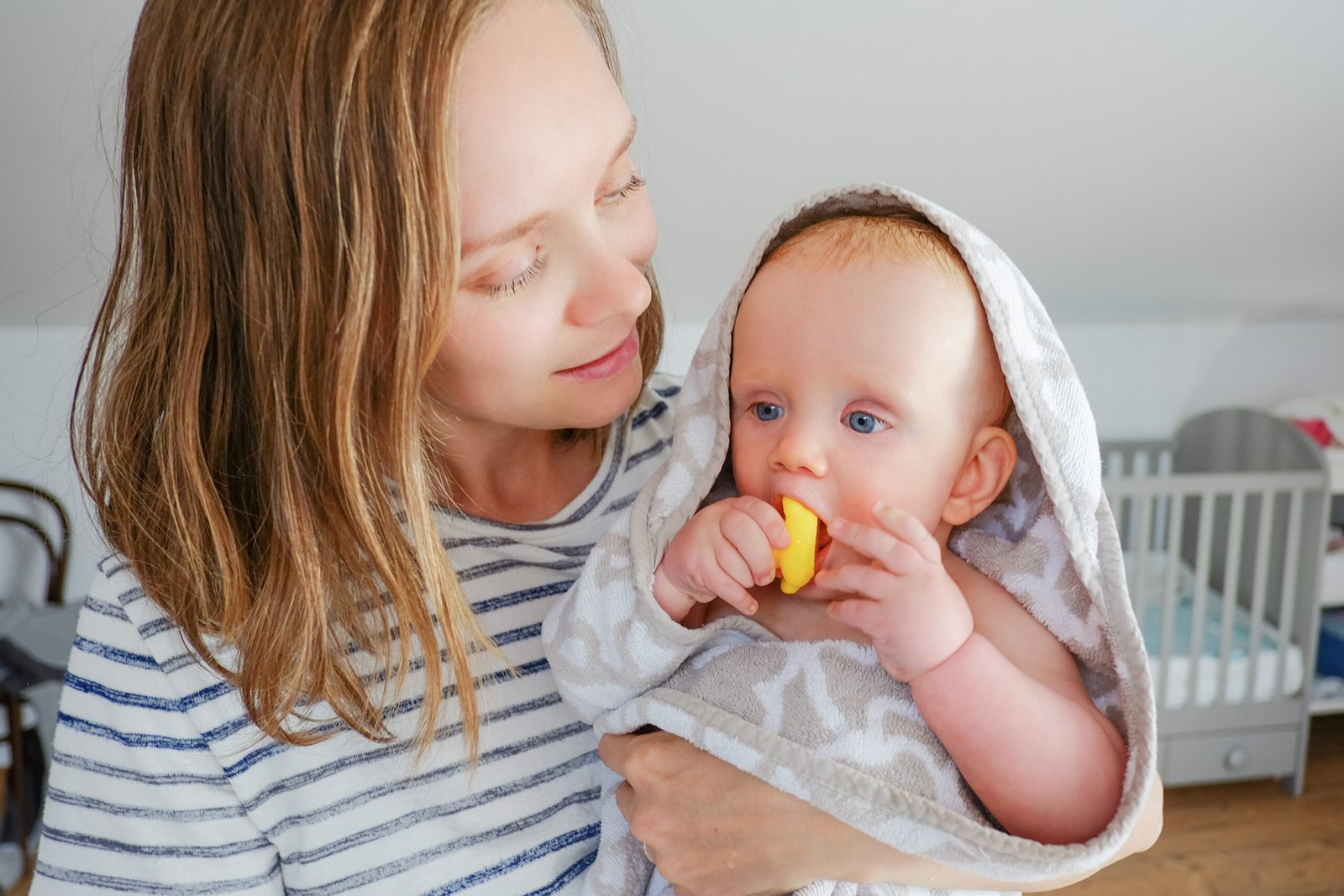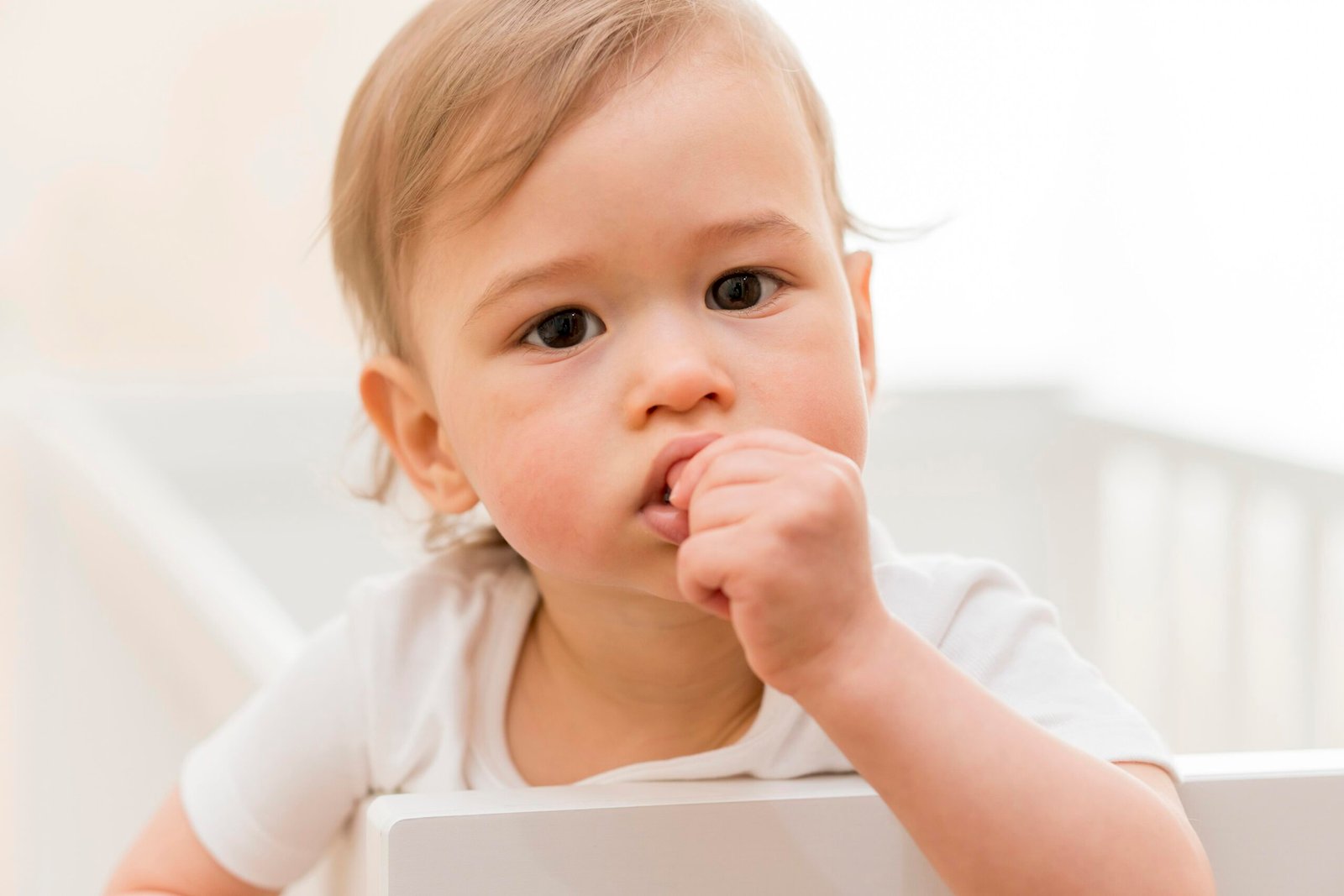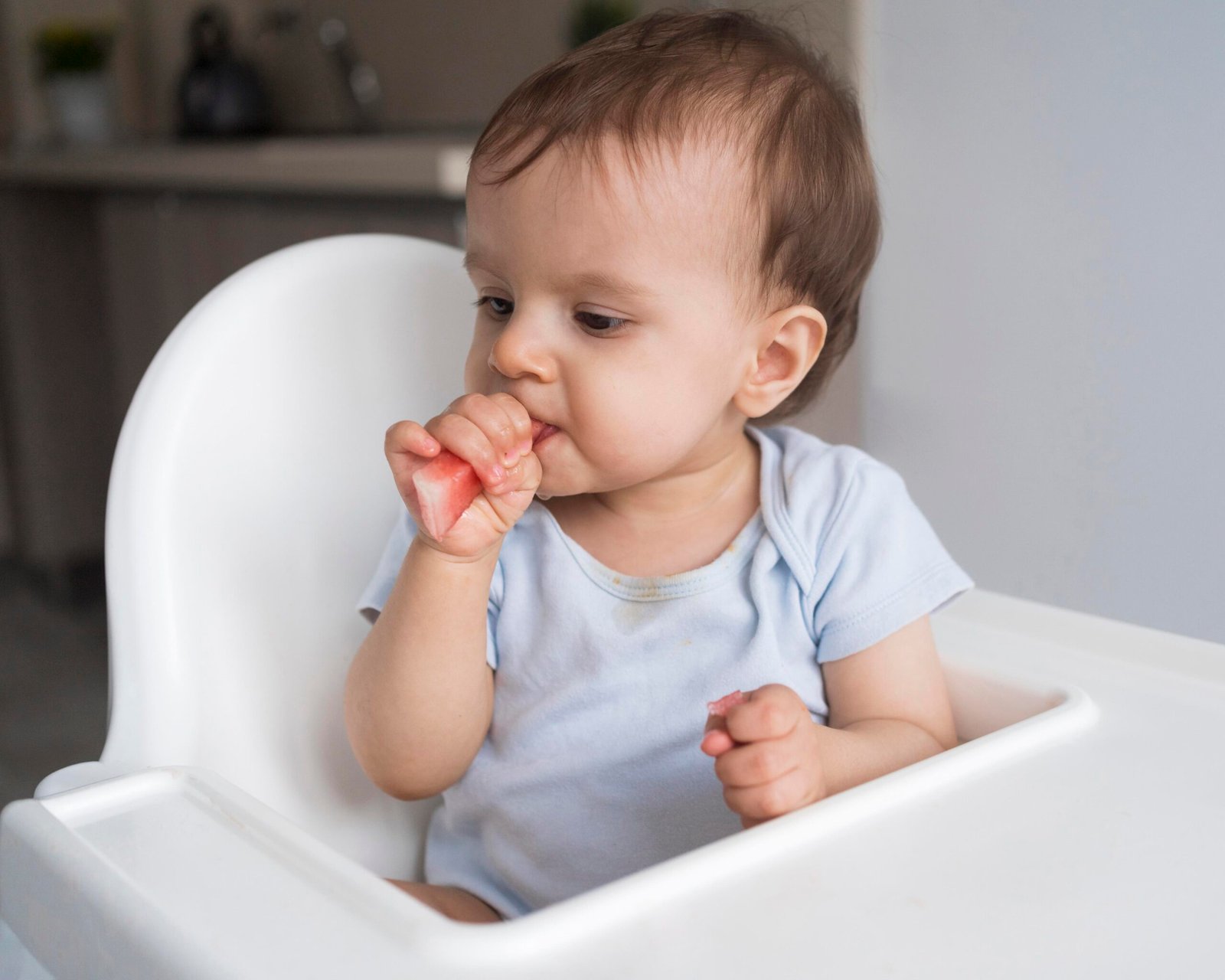
Let’s talk about teething—that rite of passage every baby (and parent) must endure. Some babies sail through it like it’s no big deal. Others act like their gums are hosting a full-scale construction site, complete with jackhammers. Both are normal.
The truth is, teething is a long-haul journey. Those tiny teeth don’t all arrive at once (if only!). They take their sweet time—usually over the first three years of life.
Here’s the general order they show up:
Most babies cut their bottom front teeth first, then the top ones. Those first little teeth often don’t cause much more than a “blind pimple” kind of irritation—annoying, but usually manageable. The bigger teeth (molars and canines) tend to bring more drama to the table.
And yes, your little one may be teething on and off from as early as 3 months until close to 3 years. I know—that’s basically forever in baby-time.

If you’ve ever been to a mums’ group, you’ve probably noticed that from around 2 months old onwards, teething gets blamed for everything: bad naps, clinginess, drool, even a sideways glance. Poor teething—what a bad rap it gets!
Here’s some perspective: babies teeth for essentially the first two years of their life. That’s a long stretch. If we blame every unsettled moment on teething, we’ll miss what’s really going on.
This is why I always recommend parents hold off blaming teething for anything until those first four teeth have actually erupted. Think of these first teeth like a blind pimple: annoying, a little tender, and yes—you want to poke and prod—but it doesn’t need a cocktail of Panadol and Nurofen.
Most babies breeze through the first few teeth without too much drama. These little ones are the smallest teeth to erupt, and it’s almost like your baby’s body is saying: “Teething’s here, and it’s going to hang around for a while—better get used to it!”
And here’s the kicker: the older your baby is when their first teeth arrive, the more likely they are to tolerate the process. Just because your baby is shoving everything in their mouth doesn’t mean they’re in agony from teething—it’s also how babies explore their world.
So yes, teething can be uncomfortable—but let’s not give it more power than it deserves.

Teething often gets blamed for everything under the sun. But here’s what’s genuinely linked to teething discomfort:
The worst of the discomfort usually happens in the 2–3 days before a tooth cuts through. Once the tooth has popped, the fuss tends to settle down quickly.

No magic fix here, but a few simple strategies can really help:

This one comes up all the time. My answer? No.
Here’s why: your baby will be teething on and off for the next two years. If you keep waiting for a “teething-free” window to start teaching healthy sleep habits, you’ll be waiting until they’re in preschool.
With the Lullababy SOS approach, we don’t do harsh sleep training. We focus on building positive sleep associations, predictable routines, and gentle independence. Those skills actually help babies manage teething and developmental leaps better—because a well-rested baby copes with discomfort more easily than an overtired one.
So if your little one starts teething while we’re working together, don’t panic. You’ll use the same comfort tools—teething gels, cool chew toys, extra cuddles—while still keeping sleep foundations in place.
Teething is just one of those messy, unavoidable parts of parenthood. Some babies breeze through with little more than drooly bibs, while others need more support (and so do their mums and dads).
The good news? With the right soothing tools, some realistic expectations, and a solid sleep routine in place, teething doesn’t have to derail your nights
Nope. A slight rise in temperature can happen because your baby’s body is working hard, but a true fever (over 38°C) usually isn’t teething. If your baby has a high temperature, is unusually unwell, or you’re worried—check in with your GP. It’s better to be safe than sorry.
Not directly. What often happens is babies drool more, swallow more saliva, and that can make their nappies looser. But if diarrhoea is severe or ongoing, it’s best to rule out bugs or allergies.
Not at all. Babies explore the world through their mouths long before teeth arrive. So while gnawing can soothe sore gums, mouthing alone doesn’t equal teething pain.
Think of it like this: if your baby is happy with cuddles, cool chew toys, and distractions—save the Panadol for another time. If they’re clearly uncomfortable despite trying those strategies, infant liquid paracetamol can help take the edge off.
No—because technically, with Lullababy SOS, we’re not “training” at all. We’re teaching your baby healthy sleep habits that carry them through teething, growth spurts, and leaps. If you wait for teething to end, you’ll be waiting for years.
If your baby is extremely unsettled, refusing all feeds, has a high fever, or something just doesn’t feel right—trust your gut and get them checked. Teething can be tough, but it shouldn’t make your baby seriously unwell.
Teething is real, but it’s often not as dramatic as it gets blamed for. Support your baby with simple comfort strategies, stay calm through the bumps, and remember—a solid sleep foundation makes everything (including teething) easier.

You deserve a smoother, calmer routine—and now’s the perfect time to grab the tools that help.
From settling support to sleep saviours, we’re giving you up to 50% off some of our most-loved essentials